Using matplotlib, I am trying to create a 3d plot that has three semi-transparent planes along the xy, yz, and xz planes. I am basing my code off of this post, which has a partial workaround for a transparency bug reported three years ago.
If you try out the below code and rotate the graph, you'll see that there are sudden color shifts in the areas where the planes overlap. For example below you see the center area suddenly change from green to blue. Is there a further workaround to prevent this?
Here is my code:
import matplotlib.pyplot as plt
from mpl_toolkits.mplot3d import Axes3D
import mpl_toolkits.mplot3d as mp3d
xy = [ (-1, -1, 0),
( 1, -1, 0),
( 1, 1, 0),
(-1, 1, 0),
]
yz = [ (0, -1, -1),
(0, 1, -1),
(0, 1, 1),
(0, -1, 1),
]
xz = [ (-1, 0, -1),
( 1, 0, -1),
( 1, 0, 1),
(-1, 0, 1),
]
fig = plt.figure()
ax = fig.add_subplot(111, projection='3d')
ax.scatter([-1, -1, -1, -1, 1, 1, 1, 1], [-1, -1, 1, 1, -1, -1, 1, 1], [-1, 1, -1, 1, -1, 1, -1, 1])
face1 = mp3d.art3d.Poly3DCollection([xy], alpha=0.5, linewidth=1)
face2 = mp3d.art3d.Poly3DCollection([yz], alpha=0.5, linewidth=1)
face3 = mp3d.art3d.Poly3DCollection([xz], alpha=0.5, linewidth=1)
# This is the key step to get transparency working
alpha = 0.5
face1.set_facecolor((0, 0, 1, alpha))
face2.set_facecolor((0, 1, 0, alpha))
face3.set_facecolor((1, 0, 0, alpha))
ax.add_collection3d(face1)
ax.add_collection3d(face2)
ax.add_collection3d(face3)
plt.show()

